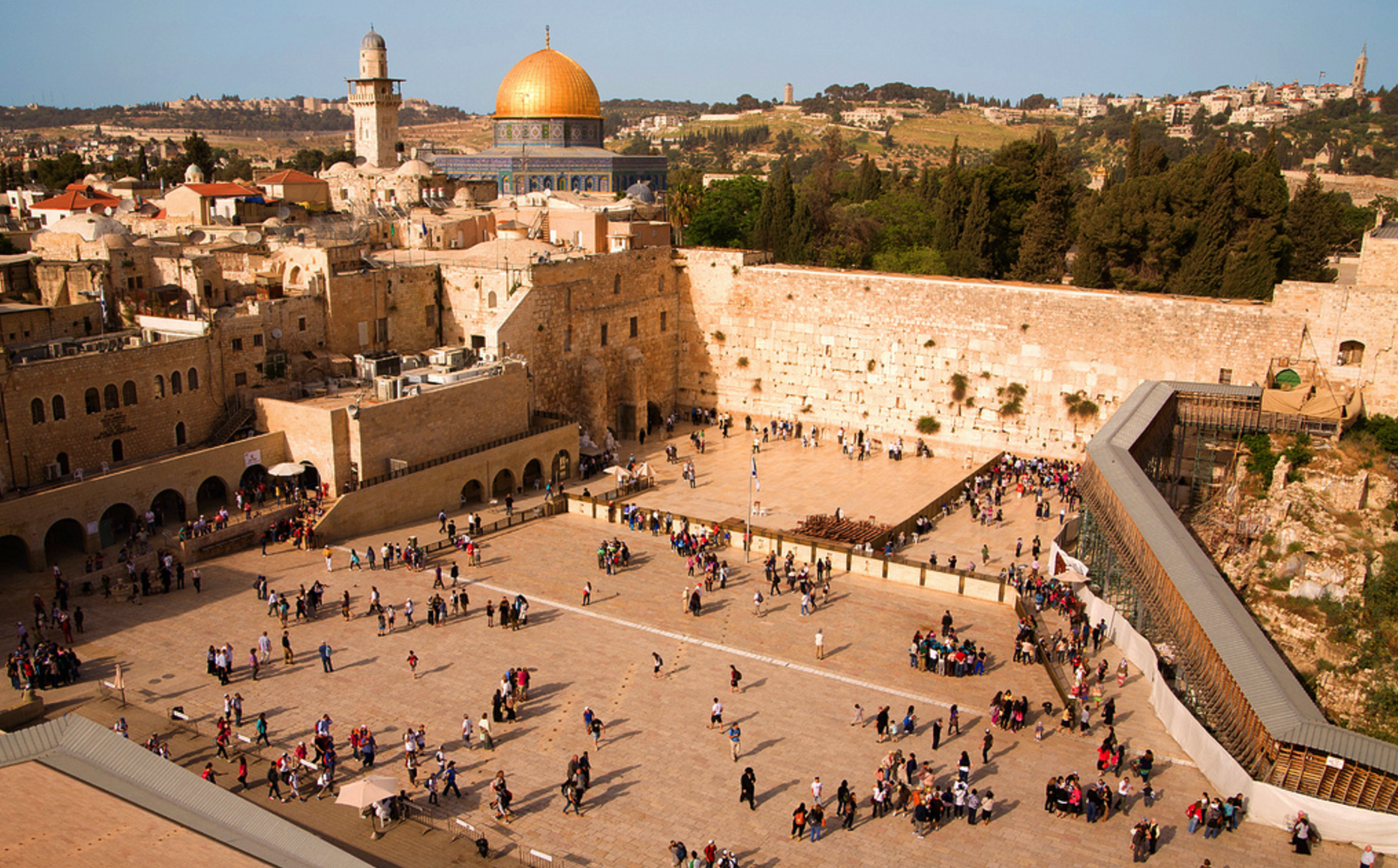Go back in time to one of the world’s holiest places, the Old City of Jerusalem. You’ll be enchanted and charmed and find that it’s quite unlike anyplace else in the world. Between its ancient structures and sacred claim, its winding alleyways and narrow streets seeming endlessly to go nowhere, Jerusalem’s Old City is nothing short of alluring and captivating.
Widely considered to be the center of the world, the Old City was built by King David in 1004 BCE/BC after his conquest of the Jebusites. The city boasts of gates – some opened, some still sealed – towers, houses of worship, shops and vendor stalls, a surrounding wall that measures almost 2.5 miles in length, and four distinct neighborhoods, roughly divided into sections or quarters, each named for the cultural affiliation of most of the people living there.
The Muslim Quarter, in the northeastern corner, is the most populated quarter and, at one time, had a mixed population of Jews, Muslims, and Christians. Today’s approximate population is a bit more than 22,000 with some Jewish families living there. The Damascus Gate is the busiest entrance into the Old City. When you enter, the rich aroma of spices, Mideast cuisine, and fresh fruits and vegetables is sure to capture your appetite. You can’t help but get caught in the hustle-bustle of the crowded marketplace filled with shops, vendors, pushcarts, and bargain-hunters from around the world.
Located in the northwestern corner is The Christian Quarter, known to be one of the holiest places in Christianity. At the heart of the quarter is The Church of the Holy Sepulchre, recognized by many as the traditional site of Golgotha-Calvary. The Via Dolorosa, marked by 14 Stations, is the mile-long devotional route through the Old City, leading from the Antonia Fortress, where Jesus was condemned by Pontius Pilate, to Golgotha (Calvary), the place of the crucifixion. Some Christian denominations consider the Garden Tomb, located outside the current Old City walls, to be the true site of Golgotha-Calvary.
The Jewish Quarter is located in the Old City’s southeastern portion where it has held a Jewish presence dating to the 8th century BCE/BC. In 1948, the quarter was besieged by Arab forces during the Battle for Jerusalem, forcing roughly 2,000 Jews out of their homes. The quarter was not recaptured until the Six Day War in 1967. Today you’ll find that the sections that had been destroyed are now re-built and feature educational institutions and synagogues. Even the ancient Roman Cardo street, with its old Byzantine bazaar, has been restored and highlights trendy businesses and items crafted by local artisans.
The Armenian Quarter is the smallest quarter of the four and occupies the southwest corner. When Armenia adopted Christianity as a national religion in the 4th century CE/AD, Armenian monks settled in Jerusalem after uncovering holy places in the city. The Cathedral of Sts. James Cathedral, dedicated to James, son of Zebedee and James, Jesus’ brother, serves as the principal church of the Armenian Patriarchate of Jerusalem. Thought to have been founded in the 4th century CE/AD, the cathedral was expanded in the 12th century. Cultural, educational, and religious landmarks and institutions are located in the quarter.
Colorful and textured, the Old City and its millennia-old quarters, was added to the UNESCO World Heritage Site list in 1981. The almost 0.35 square mile walled area houses a number of sites carrying religious significance: to the Muslims, the Dome of the Rock and al-Aqsa Mosque; the Church of the Holy Sepulchre and Via Dolorosa for the Christians; for Jews, the Temple Mount and the Western Wall; and, for the Armenians, a theological seminary and the Armenian Patriarchate.
Whether you are sightseeing or deepening your faith, Jerusalem’s densely-packed Old City has a vast array of sites and places ready to explore.















